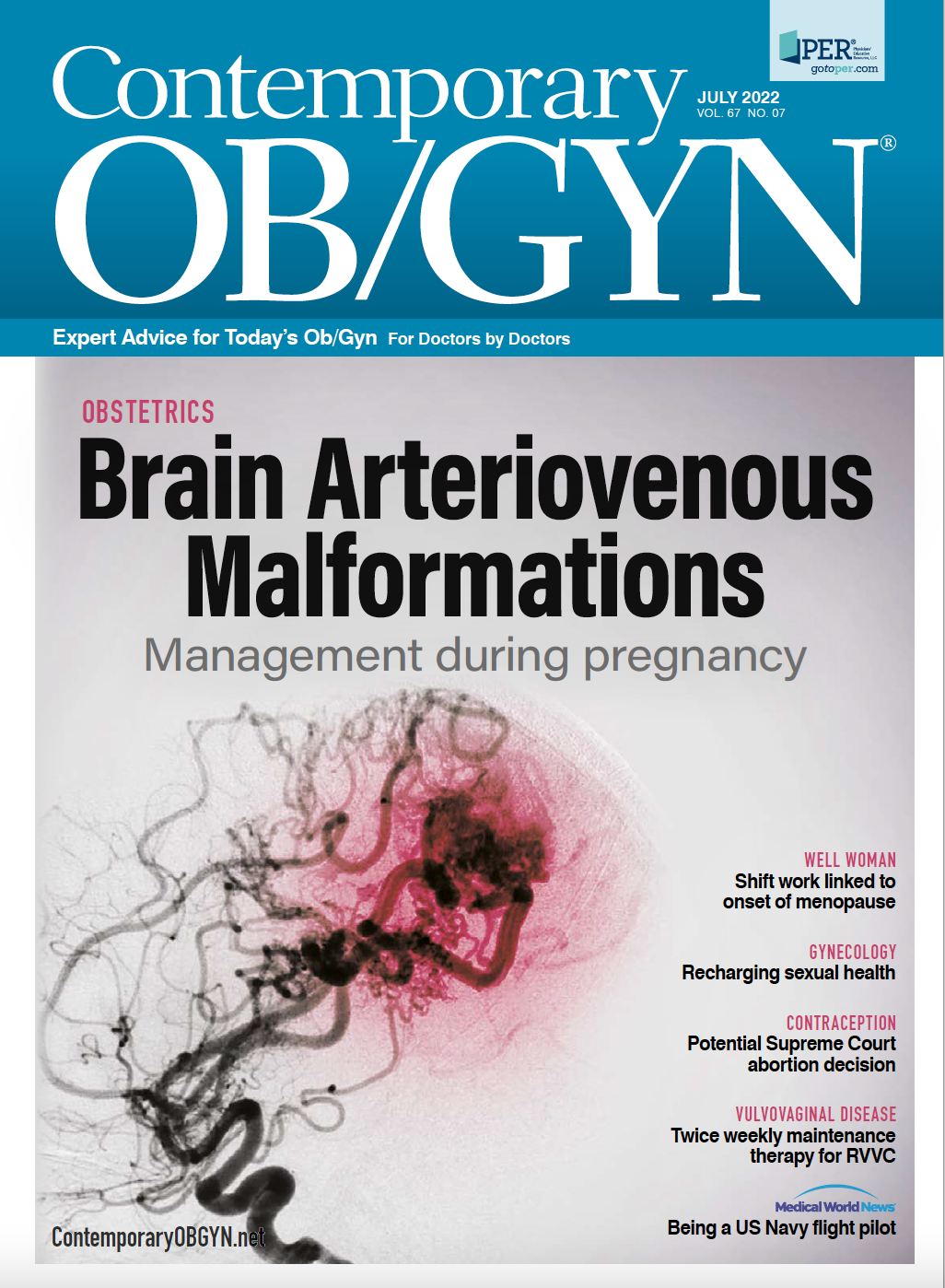Not just abortion: How the demise of Roe v Wade may impact fertility care
As we were going to press with the July issue, the United States Supreme Court overturned Roe v Wade, eliminating the constitutional right to an abortion, and leaving the question of abortion rights to the states.
Editor's Note: As we were going to press, the United States Supreme Court overturned Roe v Wade, eliminating the constitutional right to an abortion, and leaving the question of abortion rights to the states.
Jared Robins, MD

Sean Tipton

Jared Robins, MD, is executive director of the American Society for Reproductive Medicine (ASRM). Prior to joining ASRM, he was a practicing reproductive endocrinologist working in both academic and private settings.
Sean Tipton serves as the chief policy and advocacy officer for the American Society for Reproductive Medicine. He has more than 20 years experience working on reproductive health issues.
As we head into summer, all eyes will be turning to the Supreme Court in anticipation of its decision in the case of Dobbs v Jackson Women’s Health, which is challenging a Mississippi law that bans abortions after 15 weeks of gestation. The court heard arguments in the case in December 2021.
Based on questions posed at the time and on previous decisions by the majority of the justices, most observers expect the Mississippi law will be upheld, effectively overturning Roe v Wade and ending the constitutional right to pregnancy termination in the United States. This expectation is further supported by the recent and unprecedented leak of Justice Samuel Alito’s draft decision, which challenges the validity of
Roe v Wade.
The implications for abortion care of overturning Roe v Wade are clear. Each state will be free to restrict or ban abortions as it sees fit. Indeed, many have already passed laws that do this, and 13 have “trigger laws” ready to go into effect as soon as Roe v Wade is undone. A variety of approaches are being taken. Like Mississippi, many states are developing time-based restrictions (eg, abortion bans after a given gestation time). Others, anticipating a complete reversal of Roe v Wade, are putting broader bans in place.
However, restrictions will not be limited to pregnancy termination. If the rationale Justice Alito described in the leaked decision is accepted, the whole framework that has given rise to reproductive and sexual privacy may be at risk. The leaked decision very much sets the stage for challenges to the decisions that protected same-sex marriage, struck down antisodomy statutes, and established the right to contraception.
Attack on fertility care
Fertility care is also at significant risk. Many of the bills being introduced in statehouses around the country (over 500 have already been put forward, according to the Guttmacher Institute) include language defining a fertilized egg as a legal human entity.1 The terminology varies, which makes it difficult to generalize, but the danger is clear.
If the legal status of fertilized eggs or early embryos is codified, in vitro fertilization (IVF) procedures may become legally risky for patients, physicians, and staff.
The danger posed by some legislative proposals is obvious. For instance, Nebraska’s Legislative Bill 933 (the state has a unicameral legislature) asserts that an “unborn child means an individual living member of the species homo sapiens, throughout the embryonic and fetal stages of development from fertilization to full gestation and childbirth” and that the “causing or abetting the termination of life of an unborn child” will be unlawful. This bill clearly classifies an IVF-created embryo as an unborn child.
If you put a 3-year-old child in a freezer, you will kill them and presumably will have committed homicide. But what if you put a blastocyst in a cryopreservation tank? Most blastocysts will survive the thaw. However, the risk of not surviving is approximately 1%. Would that constitute homicide?
This happens every day in fertility clinics. In fact, most children born as a result of IVF procedures in the United States are born from frozen embryos. According to the Society for Assisted Reproduction (SART), 85.5% (n = 62,915) of total live births from embryo transfers in 2020 (N = 73,602) were transfers of thawed embryos.
Sometimes these questions are even more challenging. Oklahoma’s SB 1553 also defines life and legal status as beginning at fertilization—but also bans acts that would “induce an abortion if more than 30 days have elapsed since the probable beginning of the last menstrual cycle of the pregnant woman.”
Obviously, the “probable last menstrual cycle” from which a frozen embryo is derived may have taken place a long time before the embryo is used. How, then, does this wording apply to in vitro procedures? Your guess is as good as ours.
But it’s safe to say that none of the physicians providing infertility services want to be the test case that determines whether they have violated the law by putting a “person” in a tank of liquid nitrogen.
The ability to cryopreserve sperm, eggs, and embryos has revolutionized infertility care over the past 20 years. Contemporary best practices in IVF call for a single embryo transfer to mitigate the risk of multiple births. Some clinics perform “freeze all” cycles, whereas others transfer 1 embryo immediately and freeze the rest for subsequent use. Under some proposed legislation, the legal status of these embryos could be in flux. The use of single frozen embryos has enabled fertility doctors to improve the safety of procedures without compromising the probability of pregnancy from one in vitro fertilization cycle. In fact, SART reports that 88.3% of all live births (fresh and frozen embryo transfers) were singletons, and 89.5% of live births from frozen embryos were singletons.
In addition, the use of preimplantation genetic diagnosis has allowed physicians to determine whether embryos carry genetic diseases, such as Huntington and Tay-Sachs disease, and thus to eliminate these horrible conditions from the blood lines of patients. However, this technique requires the use of frozen embryos. What becomes of embryos that are not transferred because they are known to carry such diseases? Will they remain frozen forever, and who will pay for this?
Legislative risk to IVF
The legislative risk to IVF is not limited to frozen embryos. Problems in an IVF lab can impact embryo health. In fact, only about 60% of fertilized eggs survive to the blastocyst stage in the lab.
At what point will the embryos be considered nonviable? Can a physician be accused of impacting viability? What happens if equipment failure affects the culture of a blastocyst? What if the embryologist accidentally drops an embryo? Although these events are very rare, do they constitute homicide? What if a tank of frozen embryos fails and the embryos are destroyed: Would that be considered mass murder? Will physicians still be allowed to offer patients the best treatments, or will they risk being charged with a felony? For America’s fertility doctors, these are no longer hypothetical questions.
The moral and legal status of the developing fetus is a complicated question, one that science is poorly equipped to answer. Unfortunately, the current political and legal environment in the United States does not lend itself to informed, complicated, or nuanced discussions.
As a result, we will be dealing with blunt policy outcomes. “Life begins at conception” has become an article of faith for some in the antichoice community. For others, however, reality can intrude. Thus, we get laws that allow abortion in cases of rape or incest. Only the most extreme elements of the antichoice movement would want to consign women with ectopic pregnancies to death and, therefore, most legislative proposals allow them to be treated.
Nevertheless, we have seen states seeking to ban such treatments or mandate what we know is scientifically unsound to “save” ectopic pregnancies. Similarly, some state laws attempt to carve out contraception, although these attempts may be more about bowing to political realities than about the appreciation of scientific facts.
IVF is one risk facing reproductive care if Roe v Wade is overturned. But it’s far from the only risk. Roe v Wade and subsequent decisions, like Webster v Missouri and Casey v Pennsylvania, rest in part on a crucial right not explicitly articulated in the first 10 amendments to the Constitution: the right to privacy.
This right was fundamental to the findings in Roe v Wade and Griswold v Connecticut, which established the right to contraception originally available only to married women. Should the Supreme Court overturn Roe, that decision might include an explicit rejection of the right to privacy, which could have crucial implications for reproductive medicine.
We have already seen laws enacted that make treating transsexual patients illegal, in most cases based on age, but now we are seeing bills that block the care of adult patients as well.
If there is no constitutional right to privacy, there may be no end to the government’s right to limit reproductive medical procedures. If abortion and caring for trans patients can be made illegal, why should we suppose there will be a meaningful limit to what state legislatures or Congress could ban?
Most antichoice activists, and the politicians doing their bidding, don’t really want to stop would-be parents from receiving the medical treatments they need to raise families. However, they seem to have no problem if the infertile are the collateral damage required to win the abortion wars.
__
We want to hear from you.
Let us know what you think current political climate around abortion and how it is affecting your practice and the ability to care for your patients. Email cspong@mjhlifesciences.com.
__
References
1. Nash E, Cross L, Dreweke J. 2022 State legislative sessions: abortion bans and restrictions on abortion dominate. Guttmacher Institute. March 16, 2022. Accessed May 4, 2022. https://www.guttmacher.org/article/2022/03/2022-state-legislative-sessions-abortion-bans-and-restrictions-medication-abortion
2. Preliminary national summary report for 2020. Society for Assisted Reproductive Technology. Accessed May 4, 2022. https://www.sartcorsonline.com/rptCSR_PublicMultYear.aspx?reportingYear=2020

Preference for alternative contraceptive sources reported by many patients
October 31st 2024With nearly half of short-acting contraceptive users preferring non-traditional sources such as telehealth and over-the-counter options, a recent study highlights evolving patient needs in contraceptive access.
Read More
Recap on reproductive rights with David Hackney, MD, MS
December 20th 2022In this episode of Pap Talk, we spoke with David Hackney, MD, MS, maternal-fetal medicine physician at Case Western Reserve University and chair of ACOG's Ohio chapter for a full recap of where restrictions on reproductive rights have been and where they're going.
Listen
Increasing ondansetron use reported against NVP in the United States
October 29th 2024Despite being recommended as a third-line therapy, rates of ondansetron use to treat nausea and vomiting in pregnancy have increased, making it the most common prescription antiemetic against this condition in the United States.
Read More
In this episode of Pap Talk, Gloria Bachmann, MD, MSc, breaks down what it means to be a health care provider for incarcerated individuals, and explores the specific challenges women and their providers face during and after incarceration. Joined by sexual health expert Michael Krychman, MD, Bachmann also discusses trauma-informed care and how providers can get informed.
Listen
